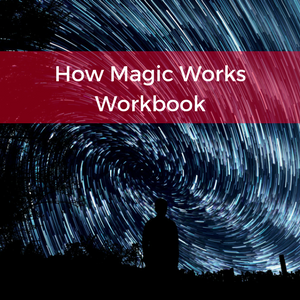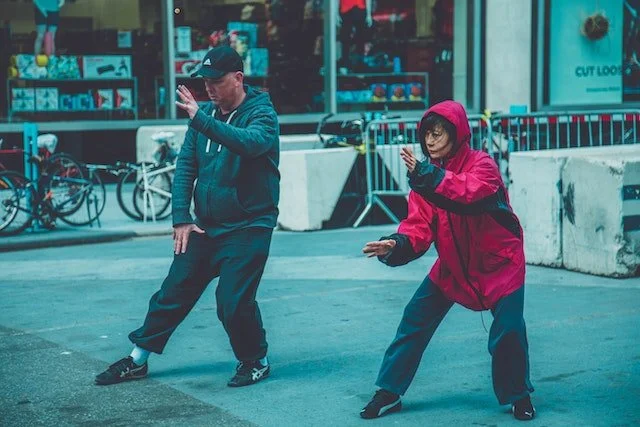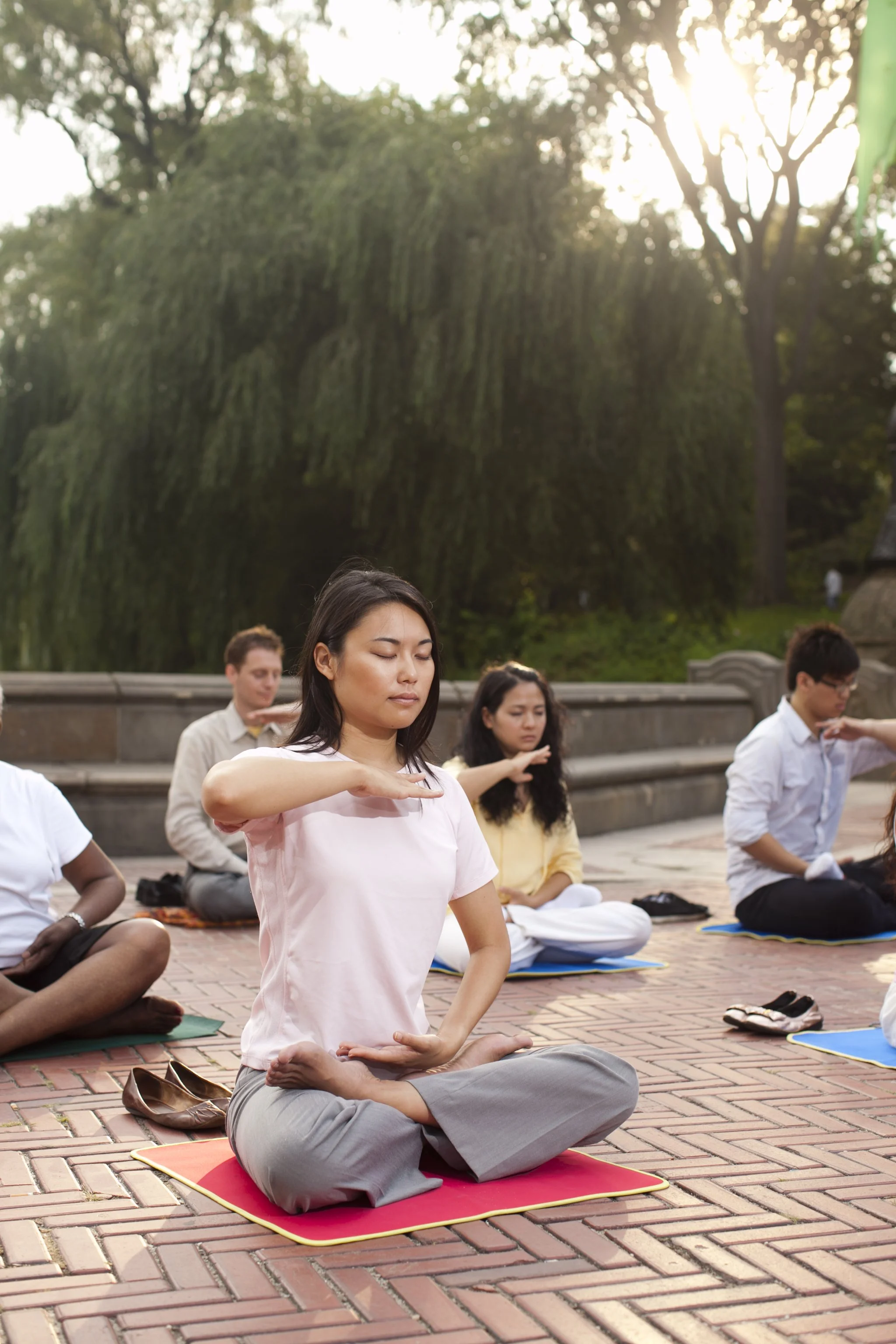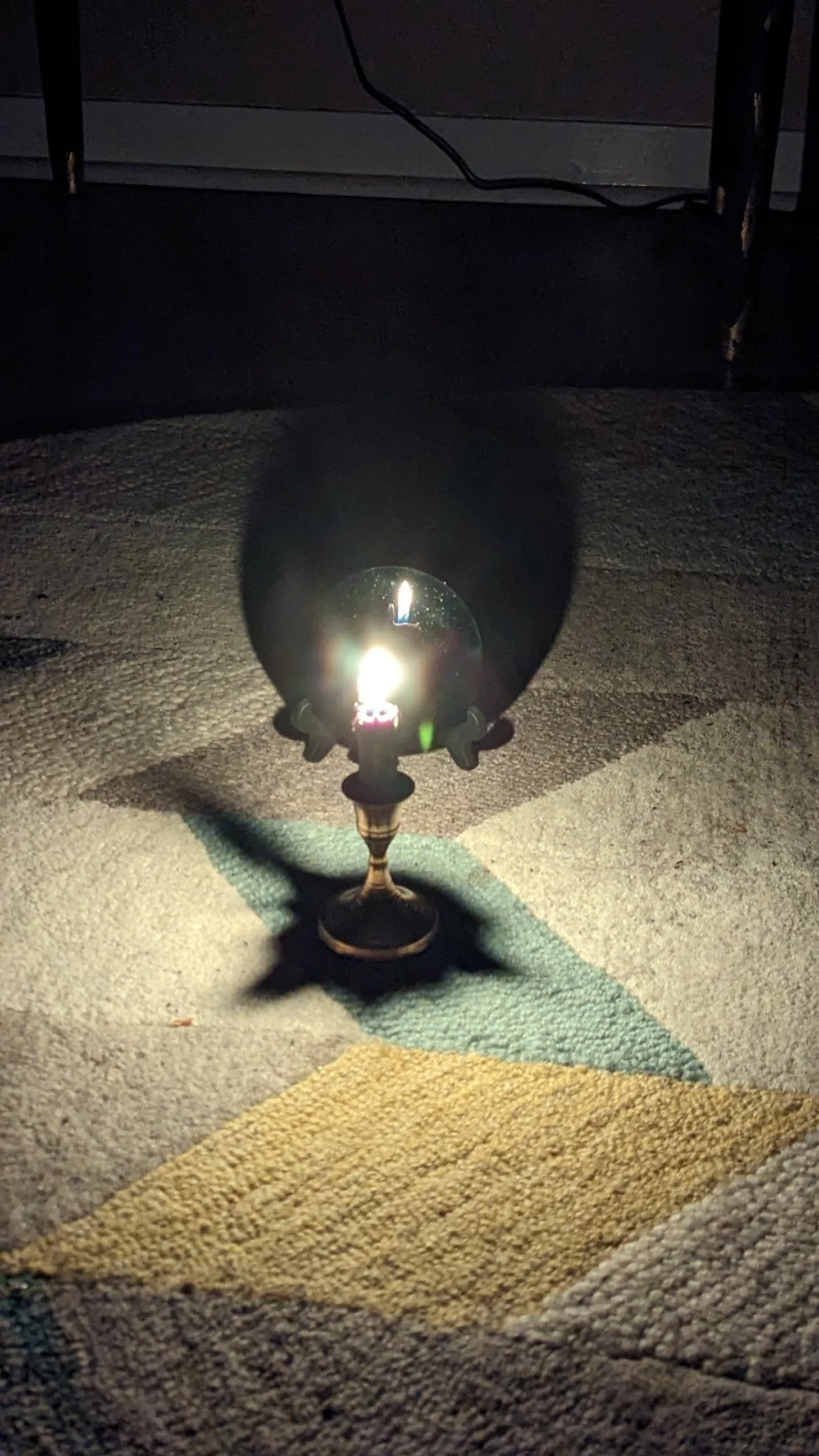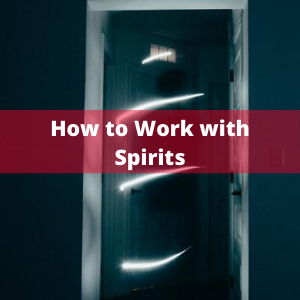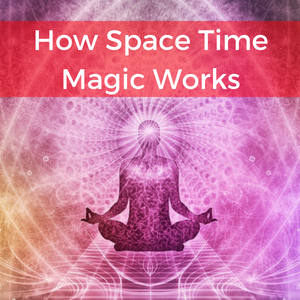Perspective exercises
How to step into your power
I’m continuing to read Becoming a Supple Leopard (affiliate link) and try out the exercises in it. One of the key points the author emphasizes is how the torsion of your movements directs the overall experience. I relate this to my study of qi gong, which focuses on both the physical and energetic movement of the body. I’ve been combining what I’ve learned with the aforementioned book with my qi studies and I’m finding that this is subtly changing the way I stand and move, and in turn its allowing me to access more subtle experiences of qi.
In martial arts and qi gong, the subtle nuances become very important. The way you move shapes the experience of the qi as it flows through your body. The more you progress, the more you are shaped by the experience of the movement, as well as your understanding of that movement. The understanding isn’t an intellectual exercise. It a felt experience that embodies the depth of your work as you engage in it.
The cultivation of qi occurs through developing a deeper relationship with your body. For example, over the last few months I’ve been working on my posture. I’ve noticed that as I continue this work, my confidence has increased because of the way I hold myself in my stance and presence. I am getting to know my body through the repetition of exercising, the stretching I do each morning and evening and through the graceful strength of the movements.
Energy work is often depicted as something separate from the body, but the most effective energy work is a fusion of the body with the spirit and the qi. I am not just moving the physical body, but every other aspect of my being. And I am also being moved by the world around me, because I exist in a collaborative relationship with it, and this is made apparent by the physical and spiritual experiences I have through this work.
We step into our power when we embrace the natural state of being that looks beyond the artificial categorizations people are so fond of using to understand the world intellectually. We are more than the intellect and when we embody and embrace this, it enables us to discover a relationship with the world that draws on the experiential work that occurs through such activities as martial arts and qi gong.
My approach to magic has been changing a lot over the last few years. I’ve steadily been integrating a more embodied approach to my work as I feel it’s essential to connecting with the more subtle aspects of reality manifestation. Stepping into your power is a recognition of how potent you are, as yourself, in this work you engage in. Each movement presents a way to get outside of your head and discover the rooted relationship that awaits in the practice of movement.
How to establish spiritual presence through Somatic posture work.
I’m reading Becoming a Supple Leopard by Kelly Starret and Glen Cordoza (affiliate link) in this book the author explores the fundamental movements needed to maintain good posture while moving. It brings up a relevant point that posture isn’t a static experience or condition, but rather something which is ongoing and ought to be maintained while moving. How does that translate into practical terms?
If I am exercising or lifting an object, I should do my best to maintain good posture. I want to pay attention to keeping my back straight and in a neutral position in order to optimize the performance of my body, while maintaining my health. I’ve been doing this very activity more mindfully as a result of my martial arts studies, but one aspect I think is worth considering is also the psychological and spiritual aspect of paying attention to posture.
When I sit or stand, in the past I have had the tendency to slouch. I never really thought about it until it was pointed out to me, but when I started paying attention I noticed not only how I felt physically but also how I felt emotionally, mentally, and spiritually. Focusing on my posture altered my experience. I began to feel more confidence in myself as well as more connected to both my internal qi and the qi around me. What this illustrated for me was the importance of doing posture work to cultivate states of experience which elevate my identity and my interactions.
I also have noticed this same effect when I focus on my posture as I move. My movements are more confident and focused when I pay attention to and integrate good posture into the movement. Initially as I’ve done this work, I’ve had to really focus on getting my posture right, but as my consciousness integrates good posture into my stance and movements it becomes more and more of a natural part of my being and expression. The result is more confidence but also a deepening of my spiritual power and presence.
Why would good posture make a difference in one’s spiritual presence?
Good posture allows us to align our body physically and physiologically within ourselves but also our environment. On the emotional level it allows us to expand our presence and this translates over to the energetic and spiritual level. When I maintain good posture I move and show up with confidence and presence. This occurs on multiple levels.
What all this work with posture is demonstrating is that something we take for granted, such as posture, can play an important role on multiple levels of our being. Making the effort to work on your posture can have many benefits, provided you are willing to consistently do the work to change and then maintain correct posture in all situations.
Developing your Energy through Posture and Qi
Shadow mask work
Image courtesy of Taylor Ellwood 2023
I recently created a couple of masks to do some shadow work. The first shadow mask I created was for the shadow of co-dependency, which is something I have struggled with most of my life. The second shadow mask I created was for the shadow of the nice guy and all the passive aggressive behaviors the nice guy embodies. While the two masks are related, they are also distinctly different in some ways.
I created each shadow mask to embody the specific behavior I wanted to call forth. I painted the 'face' of each mask. On the inside of the face I created a collage where I glued the internal messages I tell myself. By externalizing the shadow into a mask I provide myself the opportunity to explore how that shadow shows up in my life and consciously make myself aware of it, so I can work with it in a way that doesn't allow it to sabotage my life.
Inner Alchemy of Life: Physiological Magic pt 2
In part 2 of Physiological Magic I share how I gradually evolved my system of physiological magic and discuss the thought process and methodology involved in the evolution of that system, as well as how this enabled better communication with the neurotransmitters and hormones.
Shadow Work Initiatives
Photo by George Becker: https://www.pexels.com/photo/pawn-chess-piece-136351/
One of the projects I'm working on in my life is what I call shadow work initiatives. Shadow work initiatives are opportunities I am taking to explore the shadows within me as it relates to aspects within myself that I feel I need to work on. For example one shadow I've been doing a lot of work has been around my identity as a man. I've recognized how I've lived a nice guy life and I am working on changing that by learning how to communicate what I really want, but also exploring the nice guy in context to the divine masculine.
What I've discovered in this context is how much the nice guy has embodied the shadow in my life. I've bent over backwards for other people, placed my own needs and wants on hold or in suspension, in a way where I wasn't fully conscious of it. Once I started exploring the divine masculine, it forced me to also explore the shadow from a conscious place of awareness, bringing it into the light, where I could see how it played a role in my communication.
My current project around shadow work involves embodying shadow as a mask. I'm going to create a mask of codependency in order to contemplate and understand how codependency has shown up in my life as a mask I've worn both in relationship to other people and to myself. I recognize as well that codependency plays a connective role to my nice guy behaviors, which is important to see, but that its also distinct in relationship to itself.
Inner Alchemy of Life: Physiological Magic pt 1
I discuss my systems of physiological magic and share how I came up with it and provide the basics of how it works in relationship to treating neurotransmitters and hormones like spirits.
Saturnic Wisdom and Inner Alchemy
Working with Saturn involves learning how you have limited and bound yourself and invites you to break free of the self-imposed chains as well as the chains others have put on you so you can evolve and grow. I share my own journey around this in relationship to Saturn.
The Somatic benefits of martial arts
Photo by Craig Adderley: https://www.pexels.com/photo/photo-a-man-and-woman-doing-martial-arts-1543932/
I recently started learning Kung Fu at a local studio. I had been interested in studying Martial Arts for a long time and had gotten into Qi Gong because of that interest. While I continue to practice Qi Gong and appreciative the meditative and energetic aspects of the practice, I also wanted to branch out to a more martial form in order to better understand the differences, but also see how one practice might comment on the other.
While I definitely have gotten that benefit from starting to study Kung Fu, what I also came to appreciate about Kung Fu were the somatic benefits of the practice. As I learn a given move and enmesh it within my body memory, what stands out to me is how the practice engages me on multiple levels of knowing and consciousness. My body consciousness is engaged when I learn how to step or move a part of my body, but my memory is also engaged, both in learning the move, but also considering how I might have applied it in different situations in my life. My emotional consciousness is also engaged and I am able to work through and release emotions with the practice.
Somatic work has become a kind of buzz phrase of late in the holistic sphere of activities, but somatic studies have been around for a long time, and whenever I learn a new form of body work I look at how I can integrate it into the existing body practices I already practice. For example with Kung Fu, one of the experiences I’ve been paying more attention to is the angle of a movement. I first learned about the angle of a movement by studying the dance disciplines of Laban, who broke movements of the body into the platonic geometric shapes and showed how a given movement could be performed with these geometries in mind.
Fear as an Ally in Your Magical Practice
How to Integrate Initiatory Experiences in your everyday life
This previous weekend I went away for a weekend retreat where I went through an initiation process. I can't really share any details about what happened there, as its part of a mystery tradition, but what I can share is that I came into the event as one person and came out of the event as a changed and more grounded person.
That is part of the purpose of initiation. We go into an experience, not knowing what will happen and we are changed by that experience in fundamental ways that we may not even fully understand but that nonetheless become part of our rooted being.
Over the years I've had the fortune to attend other events where I've experienced an initiatory change from who I was, wherein I felt a shift in my state of being. This happens any time you remove yourself from mainstream society and immerse yourself in a different environment physically, emotionally, mentally, and spiritually. Some experiences may be more intense and driven than others, but all experiences that take us out of the comfort zone will inevitably bring about change.
The question arises though: How do we integrate that change back into our everyday lives?
The nature of attachments and how to liberate yourself from them
image courtesy of unsplash
Lately I’ve been doing a lot of work around attachments, and my relationship with myself and those attachments. I’ve come to recognize something fundamental about attachments: They operate from a place of fear and scarcity and possession. You think you have something or someone (you don’t) or you want to have something or someone (you won’t) and all this comes from a place of fear that leads to attachment. Attachments operate from a place of control, a desire to make the world around you conform to your will, but they ultimately weigh you down.
Understanding the nature of an attachment can help you liberate yourself from it. An attachment is ultimately informed by a sense of scarcity, but also a limiting belief that if you don’t have something or someone in your life you won’t be happy. Ironically you give away the very control you seek when you are attachment, because you are basing your sense of happiness and well being on something or someone external to yourself. Even if you temporarily attain what you are attached to, it doesn’t provide happiness. You might feel a sense of pleasure, but pleasure is fleeting and immaterial and if you don’t attain the attachment it becomes a perceived source of unhappiness because you are holding on to a limiting belief that the desired object, event, person etc., has the key to your happiness, when in fact the opposite is true. If anything the struggle around attachment keeps you from truly appreciating and enjoying whatever experience you have as well as whoever you are with. Most importantly it keeps you from enjoying yourself.
So what do you to liberate yourself from an attachment?
First you need to recognize that the attachment won’t bring you happiness. Your attachment is to a sense of happiness originating from an external source. When you recognize that happiness comes from within and that no one or nothing else has that happiness then you can let go of trying to find that happiness somewhere else. You’re looking in the wrong places when you look for happiness from someone or something else.
Scrying for changing behavior
Picture copyright Taylor Ellwood 2023
Sometimes the reason you want to scry is because you want to change a specific behavior.
For example, you become aware of a behavior you do that sabotages your interactions with other people. You aren't sure how to change it.
Scrying may be just the right tool you could use for the purpose of behavior alteration.
Why?
The act of scrying opens us to the experience of using fascination to draw us into the underlying narrative that informs the behavior and it provides us a ways of changing that behavior, because we use scrying to change the narrative.
The key though is to create the experience of fascination via the scrying tools you are working with. And there's a hidden component to this as well.
My Experiments with Scrying
Last year I took a class on Scrying taught by Harper Feist. It was a fascinating course that explored the sensory aspects of scrying in relationship to our senses.
Not just the five senses of sight, sound, taste, touch, and smell, but also kinisthetic, thermal, and other more subtle senses all of us have access to, including of course the "psychic senses."
Since taking that course, I've been continuing to experiment with scrying and have made it a regular part of my practice.
Even before I took the class I had done some scrying with bowls of water and with a crystal globe, but after taking the class I added a couple of tools to my scrying practice.
I bought a black scrying mirror and I started adding candles to the mix in order to create a source of light.
Lessons I learned in 2022
I reflect on the lessons I learned in 2022 and share my vision for what I plan to manifest in 2023. I also discuss the false intimacy of social media and share why I’m making some changes in what I share on here and on social media in general.
How to get unstuck in your life
Photo by Andrea Piacquadio: https://www.pexels.com/photo/sad-isolated-young-woman-looking-away-through-fence-with-hope-3808803/
There is nothing worse than feeling stuck in life.
You're going through your daily life and everything seems to be going swimmingly, but at your core you feel something...off. A deep feeling of dissatisfaction, a sense of feeling stuck somewhere in your life. Maybe it's with your job, maybe its with your relationship, maybe it's something else altogether.
At the core of that feeling of stuckness is an experience of anxiety that we often try to bury deep within ourselves. That feeling of anxiety could come from a desire for approval or a fear of abandonment or something else altogether, but it keeps us trapped in a cage of our own making.
How I'm learning to choose myself
I’ve never been good at choosing myself.
I’ve never been good at saying yes to myself.
I’ve recently come to realize that because I’m going through this intense transformation in my life, where I’m looking at everything that’s come before and I’m seeing all the patterns that have influenced my choices, whether those choices have been relationships, or jobs or anything else I’ve done and what I’ve come to recognize is how much the choices I’ve made have been about saying yes to other people and no to myself. And pretty much everything I’m saying yes to are old patterns that have kept replicating themselves with new masks, but underneath it all is the same narrative, the same giving away of personal autonomy and sovereignty and the person doing that isn’t anyone else other than me.
How to Apply Awareness to Magic
I discuss how to apply awareness to your magical practice in order to get better results, but also put together better magical workings. I discuss why awareness can help us with the process of letting go of the lust for results so that we can focus on the magical work we need to do.


